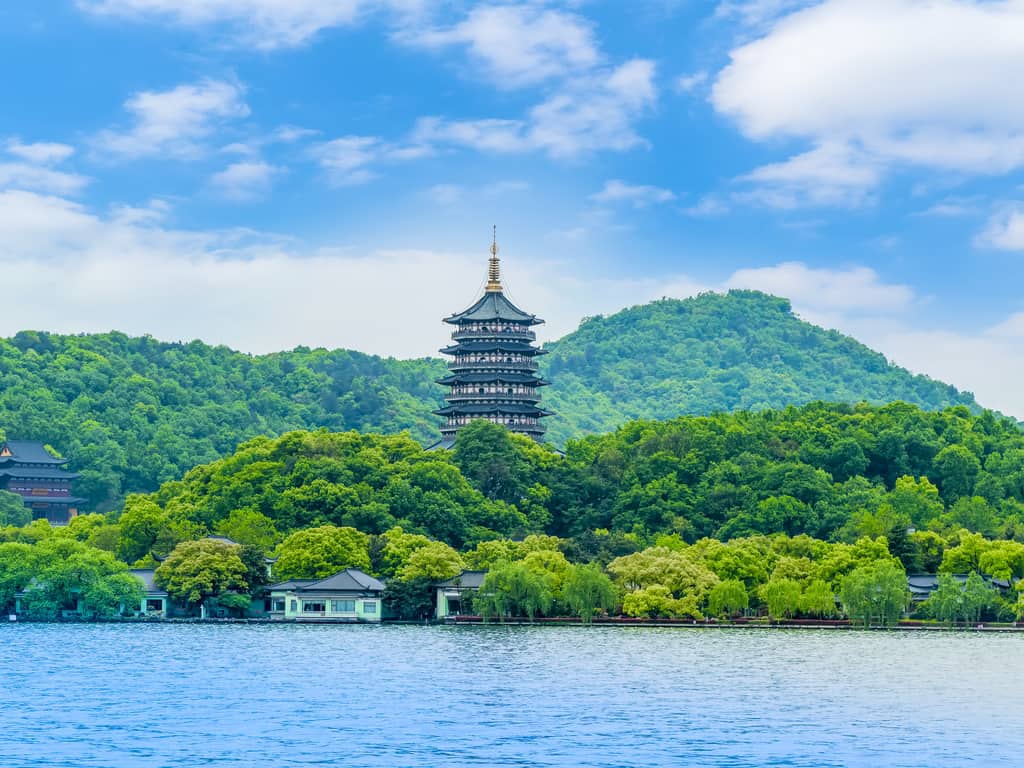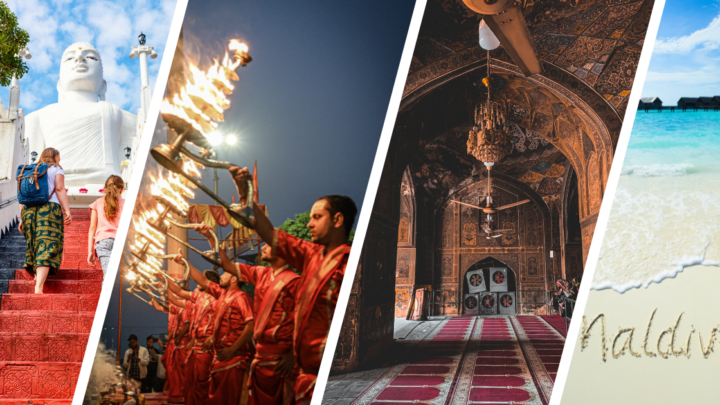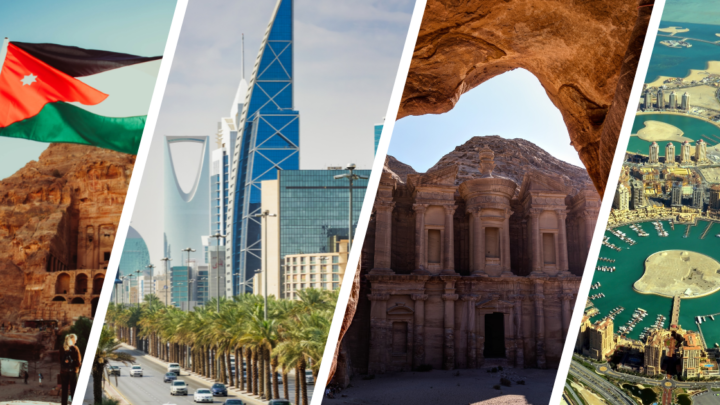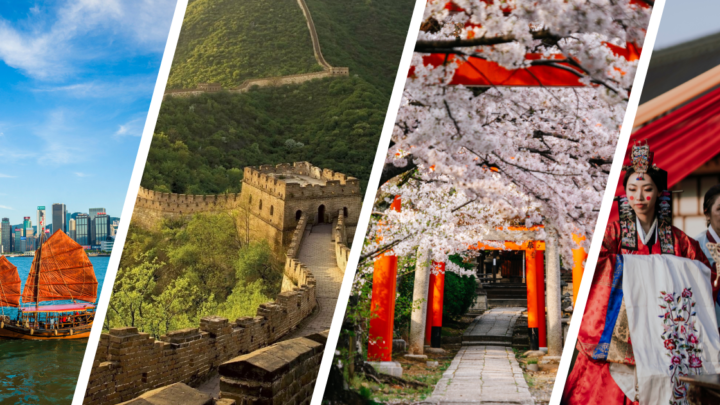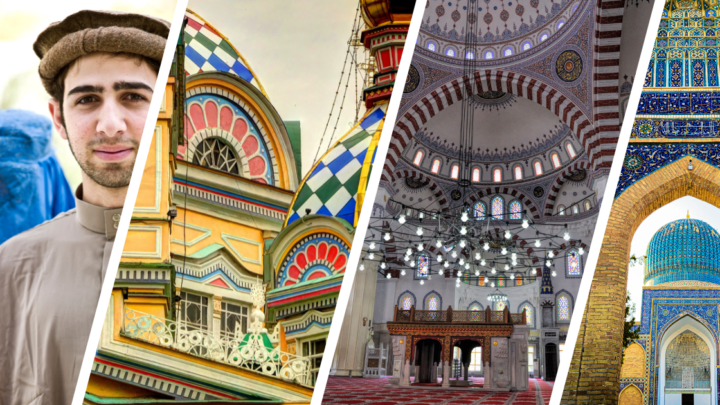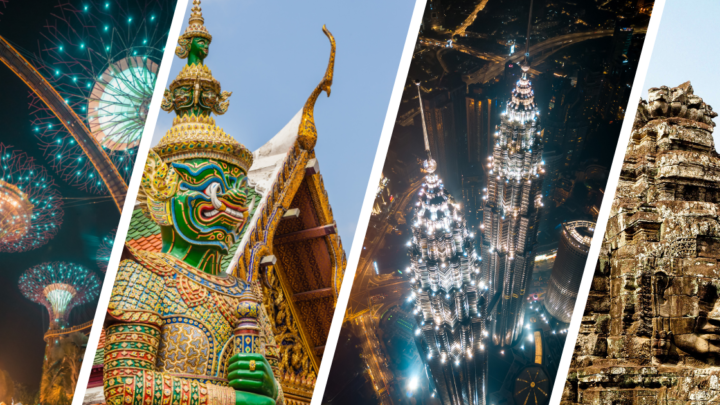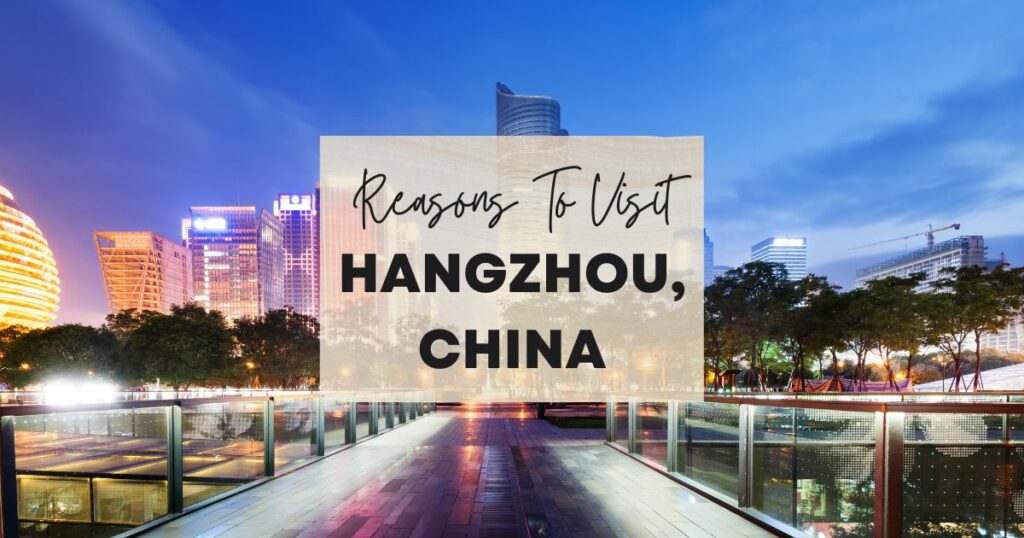As a vacation spot, Hangzhou, China, is a top-notch travel destination. Look at our recommended travel activities and attractions in Hangzhou, China, to get the most out of your time there. Check out the list of the best things to do in Hangzhou, China, and places to go in Hangzhou, China, below. We at Wondrous Drifter, a Web 3.0 travel startup, have big plans to shake things up in the travel business.
Table Of Content
- 28 Hubin Road
- Baochu Pagoda
- Chinese National Museum
- Former Residence of Hu Xueyan
- Guo’s Garden
- Hangzhou Botanical Garden
- Hangzhou Paradise
- Jinghang Grand Canal
- Leifeng Pagoda
- Lingyin Temple and Fei Lai Feng
- Mount Mogan
- Longjing Tea and the Dragon Well
- Pagoda of Six Harmonies
- Prince Bay Park
- Qiandao Lake
- Qinghefang Ancient Street
- Songcheng
- West Lake
- Wuzhèn Water Village
- Yue Fei Temple
- Explore Asia
28 Hubin Road
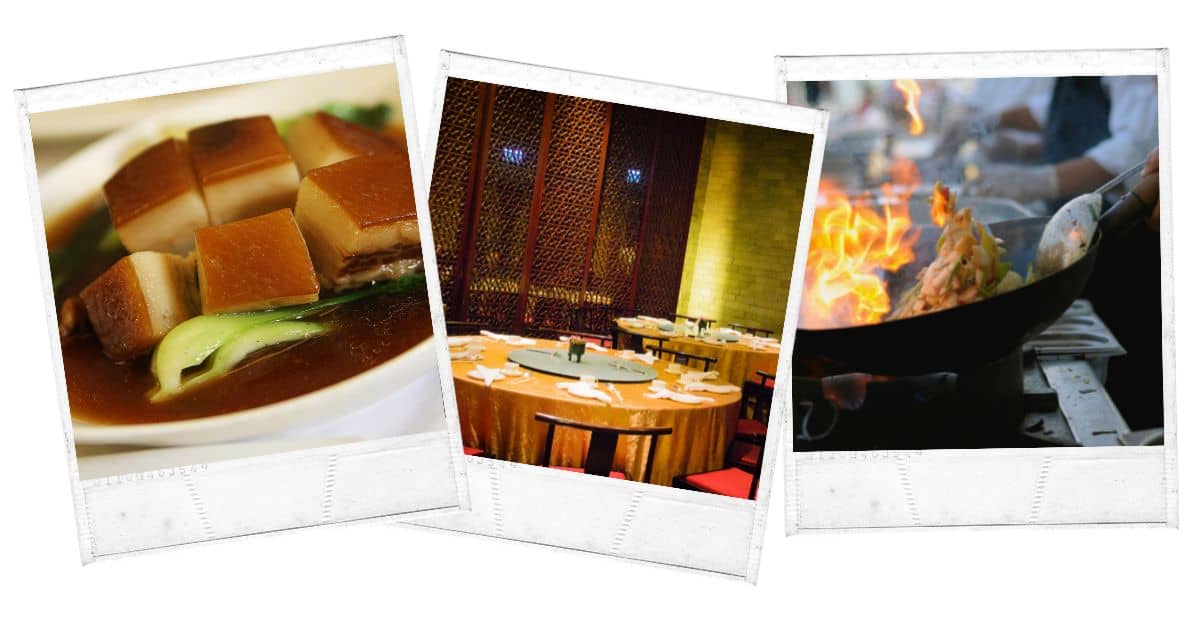
Are you looking for a fine dining restaurant in Hangzhou? Then this is a solid pick for your seeking!
Hangbang cai’ or Hangzhou cuisine is served in a vast, gorgeous ground-floor dining area located on the shores of West Lake, the city’s most popular tourist destination.
The Grand Hyatt Hangzhou’s flagship restaurant, 28 Hubin Road, has won numerous awards.
Known for the high caliber of his precisely prepared plates, executive chef Colin Cheng has been at the restaurant’s helm since its inception in 2005 and has seen 28 features on the list of Fifty Best Restaurants in Asia due to his international recognition.
The gravity-defying pyramid of dongpo pork that is sure to please the crowd is one of the highlights, along with the baked Beggar’s Chicken that is wrapped in lotus leaves and baked in clay.
Both demonstrate Cheng’s talent for elevating and refining traditional local dishes into deserving recognition as culinary masterpieces.
Every meal can be paired perfectly at 28, thanks to the city’s largest wine collection with 2,500 brand bottles!
Enjoy the taste of the Song Dynasty feeling here in this signature Chinese restaurant.
Address: 28 Hu Bin Rd Hangzhou, China 310006
Baochu Pagoda
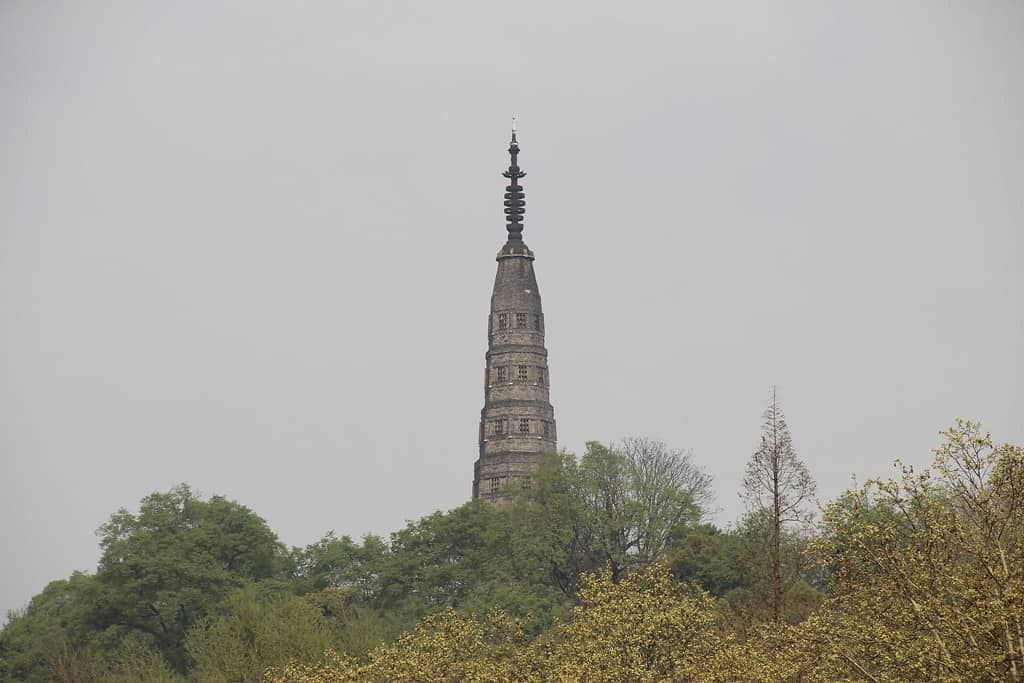
It’s well worth the effort to climb to the top of Baochu Pagoda for the stunning views of the city.
The Baochu Pagoda, located on Precious Stone Hill to the north of West Lake, is also known as the ‘Baoshu,’ ‘Baosuo,’ or the ‘Precious Stone Pagoda.’
It appears to be a mirror image of the Leifeng Pagoda, which is located south of the lake.
According to popular belief, the Baochu Pagoda is comparable to a slim beauty, and the Leifeng Pagoda is like an old monk.
They are well-known sights and tourist attractions in the West Lake area.
On a clear day, you may enjoy panoramic views of the lake and the rapidly expanding metropolis. It’s one of the most gorgeous sights to behold in Hangzhou, without a doubt.
Please take your time and enjoy the combination of urban and natural settings rather than hurrying down the hill.
If you’re feeling extra adventurous, there are some rocks to climb to get the best views of the surrounding area.
Address: 746X+HG4, Baochu Rd, Xihu, Hangzhou, Zhejiang, China, 310025
Chinese National Museum
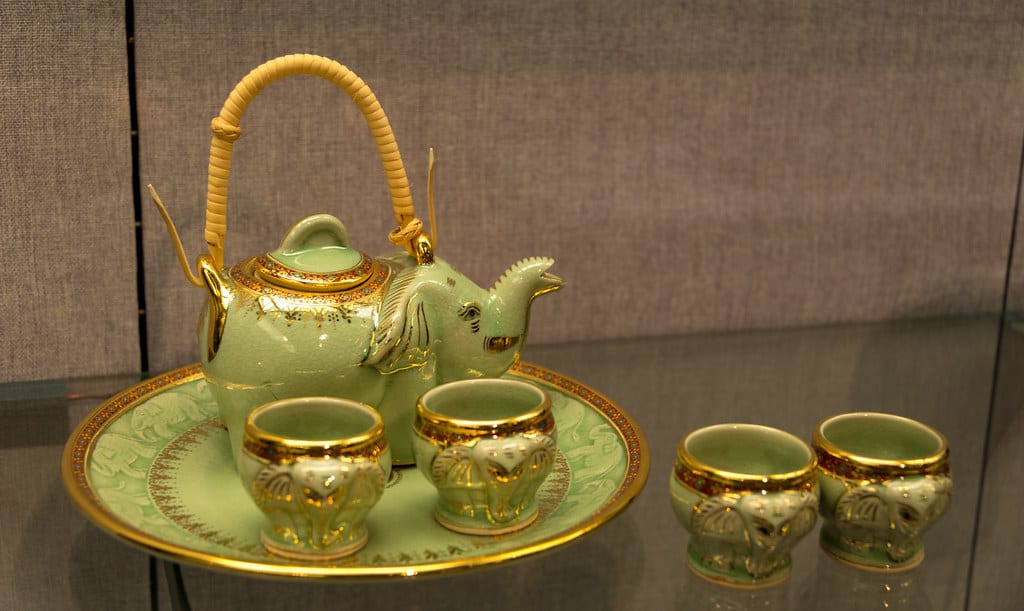
The tale of silk continues to be told at a museum in Zhejiang.
A UNESCO World Heritage Site, one of China’s first state-level museums, and the world’s largest textile and costume museum are located in Hangzhou on the West Lake.
Currently, it possesses collections of not only ancient Chinese silks but also textiles made of different fibers and costumes from all corners of the globe.
The museum’s primary objective is to collect, analyze, conserve, and display Chinese textiles, mainly silks.
Visitors to China’s National Silk Museum will gain a fresh appreciation and understanding of Chinese silk, the Silk Road, and Chinese and Western silk art and fashion through an informative and fascinating window into 5000 years of silk history and culture.
Even more impressive is the China National Silk Museum’s stunning landscape, which includes a variety of flowers, trees, and birds singing in harmony with the sounds and smells of nature.
This makes for a pleasant experience as you learn about silk-making at the museum.
Address: 73-1 Yuhuangshan Rd, Xihu, Hangzhou, Zhejiang, China, 310002
Former Residence of Hu Xueyan
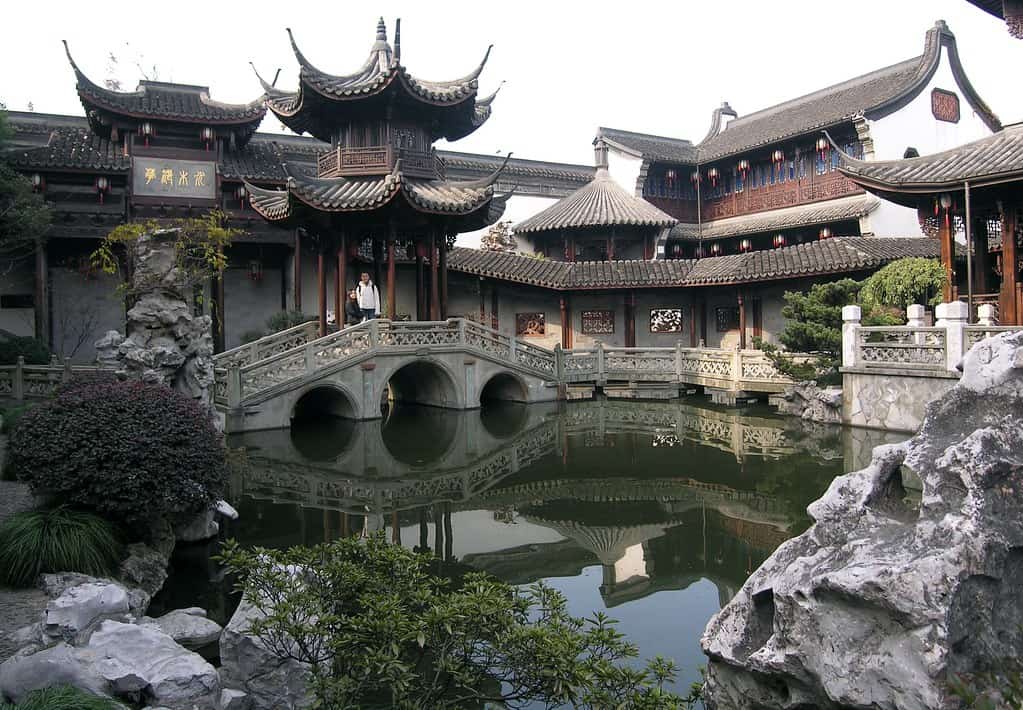
Visit this home, and you’ll feel like you’re taking a trip back in time to China, right down to the beautiful gardens.
The merchant Hu Xueyan, a second-grade officer in the Qing administration who served between 1872 and 1875, designed and built this palace.
His extravagant lifestyle is still apparent — on exhibit are a wealth of costly antiquities, unique paintings, fine wooden furniture, and trendy Western accessories, all of which reflect the Sino-Western cultural fusion of the time period in question.
The architecture of Hu Xueyan’s former residence includes nanmu, ginkgo, nanmu, Araucaria cunninghamii, nanmu, and Chinese beech, among other precious woods.
The artificial hill at Zhiyuan Garden has the world’s largest artificial cave. The garden’s design is based on the royal garden’s qualities.
The building in the garden at the time was the highest point from which to see the entire city of Hangzhou.
His most well-known establishment is the pharmacy of Hu Qing Yu Tang, which is still in operation today.
Your visit will be enhanced by the presence of attractive buildings and thorough interpretations of the structure and Hu Xueyan’s life.
Address: No.18 Yuan Bao Street, Shangcheng District, Hangzhou City, Zhejiang Province
Guo’s Garden
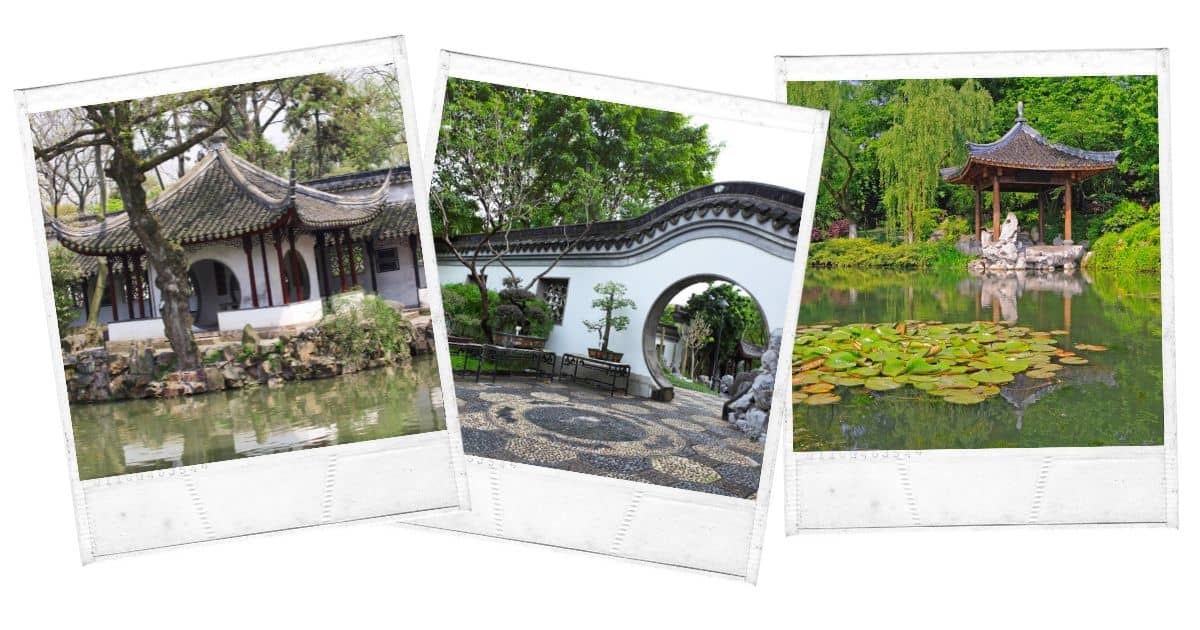
Hangzhou’s best-preserved traditional private home will give you a tour of the “Number One Garden of the West Lake.”
Guo’s Villa (Guō Zhuāng) is a beautiful example of Chinese aesthetics, in which the artificial and natural elements are brought together in a harmonic balance by the architect.
This beautiful garden palace was constructed for a silk trader in the late Qing dynasty.
It faces Spring Dawn and is bordered by the Sudi Causeway, which spans West Lake.
You can see the tranquil Southern Screen Hill and the Baochu Pagoda in the distance.
Four main areas comprise Guozhuang Garden: the big lake, the tiny lake, the rockeries, the residential area, and the region around West Lake.
There are winding roofed halls, mansions, pagodas, rockeries, and calming floras in Guo’s Villa, ideal for strolling through.
Traditional Chinese gardening south of the Yangtze River focuses on naturally bringing nature into a confined living space.
Check it out now and enjoy its peaceful surroundings, well-preserved buildings, and exquisite landscaping!
Address: No.28 Yanggong, Xihu District.
Hangzhou Botanical Garden
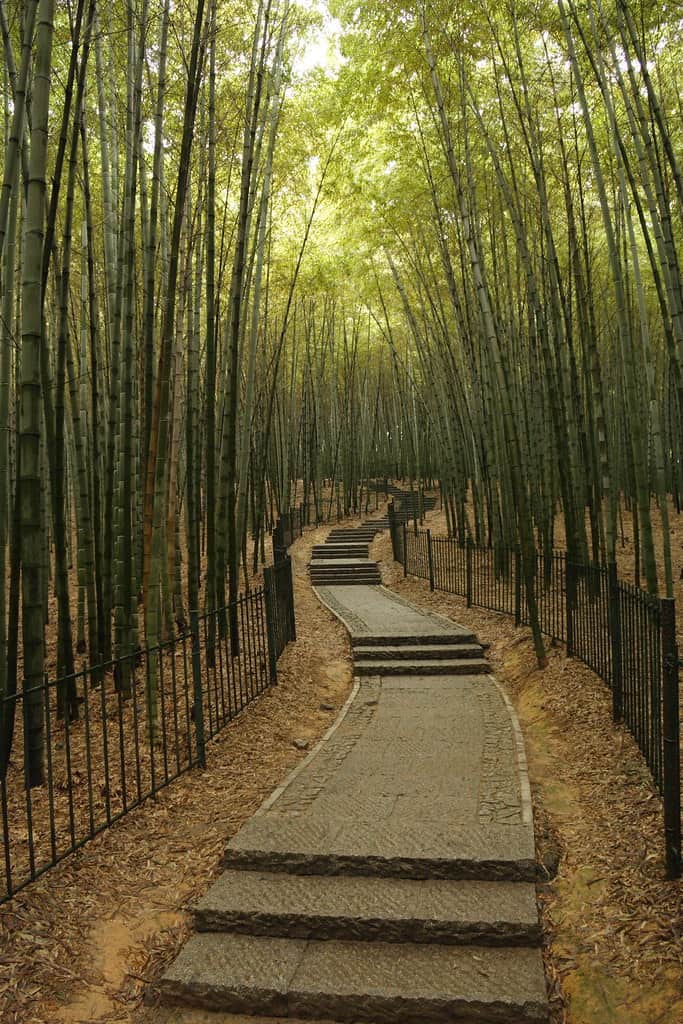
Have you ever seen a giant open-air botanical museum?
The Hangzhou Botanical Garden, located to the northwest of West Lake, is a lush oasis of greenery.
Many people travel to this location during the holidays to take in the scenery, take photographs, and breathe in the fresh air.
The botanical garden has the most significant number of tourists in the early spring when the plum blossoms are in full bloom.
Because of Hangzhou’s warm and humid climate, the garden scenery changes dramatically throughout the year and the seasons.
While the garden is primarily a display of lovely and exquisite plants and flowers, the garden also houses a research facility that researches the cultivation of plants and environmental conservation.
Aside from the Yulan trees (which are particularly lovely in spring), tourists should keep an eye out for a variety of other unique plant life, including the lotus, hammock, pines, bamboos, and the sweet-scented osmanthus.
Don’t waste your time and get ready to explore a different kind of nature!
Address: Taoyuanling No.1, West Lake District, Hangzhou City
Hangzhou Paradise
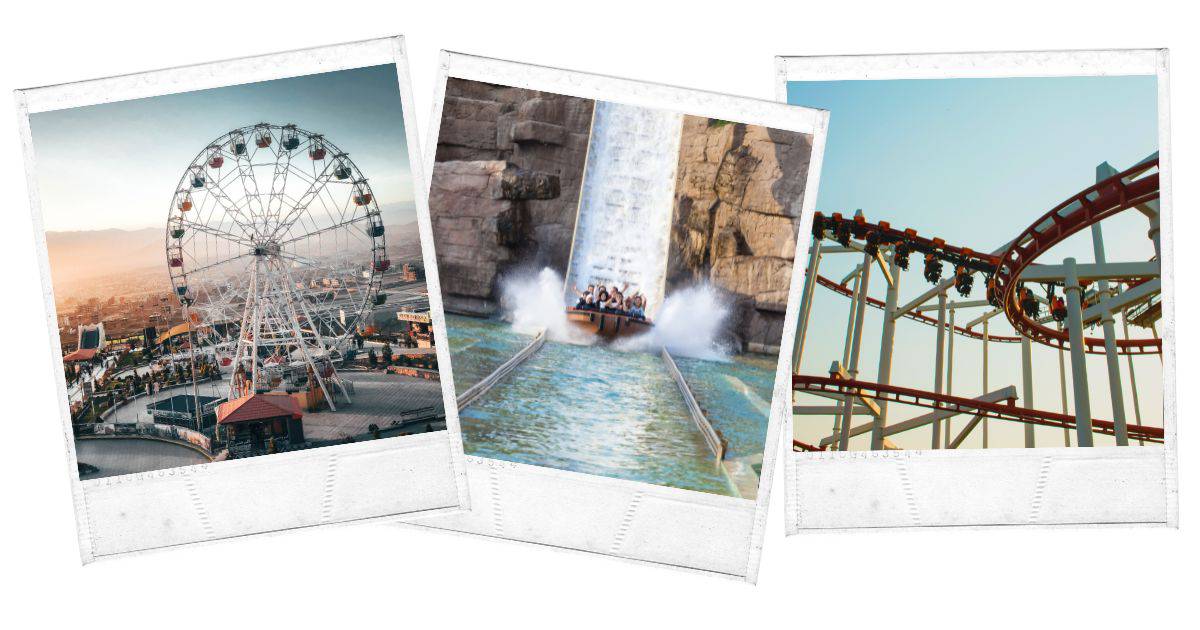
From family rides to thrill rides, they have it all!
Hangzhou Paradise Park is Eastern China’s most extensive theme park.
It provides a diverse range of recreational opportunities to ensure that individuals of all ages and genders can have a good time here, from any location, in any weather condition, within its boundaries.
From thrill-seekers to peace-lovers, visitors of all types will find something to their liking among the numerous activities available here.
He describes it as “a sea of bliss, a paradise of amusement.” The lake, mountain, river, sailboat, and sand beach all demonstrate the peace between humans and the natural world.
With extreme workouts like bungee jumping, rock climbing, and the space swing available in a wide range of variations, this park is a land abounding in excitement and thrill and a haven for those seeking adventure.
The Carnival Recreation Area is the focal point of Hangzhou Paradise Park and is open to the public.
Enjoy the excitement of water play while enjoying taking in a cultural show with music and dance from worldwide.
In Hangzhou Paradise Park, excitement and thrills everywhere await you.
Address: 2555 Feng Qing Da Dao, Xiaoshan District, Hangzhou, Zhejiang, China, 311231
Jinghang Grand Canal
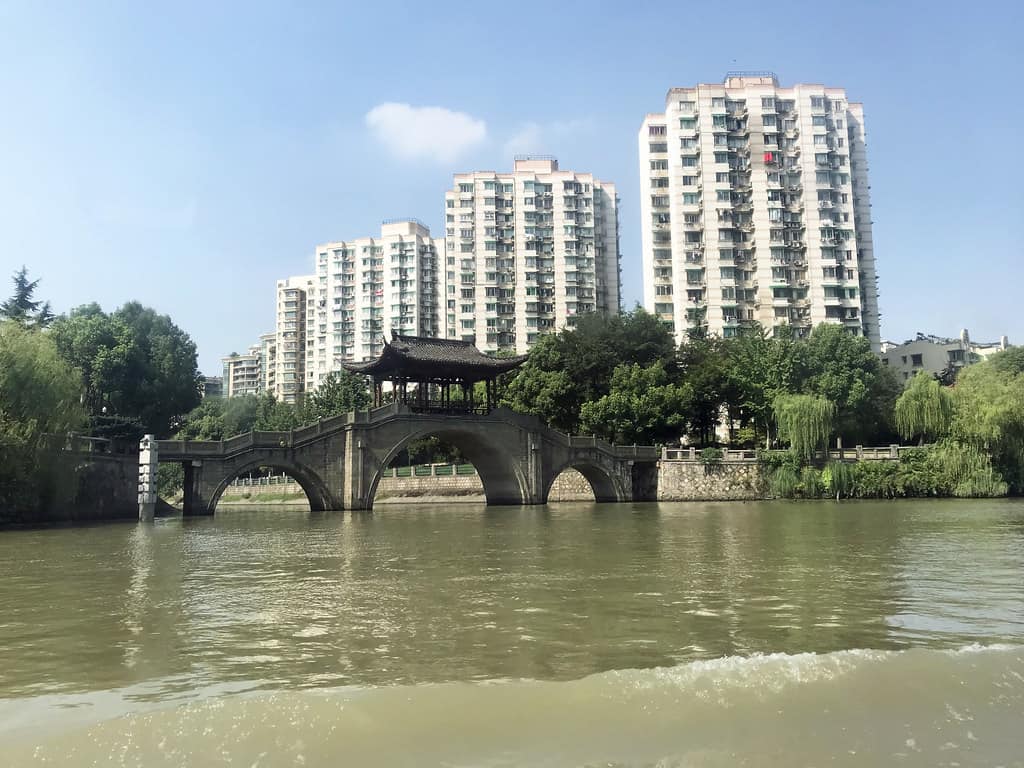
As a symbol of China’s rich history, the Grand Canal is a lasting legacy.
Before being connected by the Sui Dynasty, the Grand Canal was constructed section by section in several places and dynasties before it was completed.
It is a vital transportation artery that connects the Yangtze, Yellow, Huaihe, Haihe, and Qiantang rivers, passing through Beijing, Tianjin, Hebei, Shandong, and Jiangsu provinces before ending in Hangzhou.
Food and goods could be transported from the south to the north by the Grand Canal, which linked rivers from different directions.
One of the most incredible ways to see the characteristic river villages in southern China, including antique residences, traditional stone bridges, and historical treasures, is to take a boat trip along the old Canal.
Like the Great Wall, the Grand Canal is regarded as one of ancient China’s most spectacular and miraculous structures, providing a fascinating window into the country’s rich historical past.
A wide variety of delicious cuisine is available for visitors to sample while taking in the breathtaking scenery.
You will find joy in experiencing some of the area’s customs while visiting.
Address: Lishui Road, Gongye District, Hangzhou 310015, China.
Leifeng Pagoda
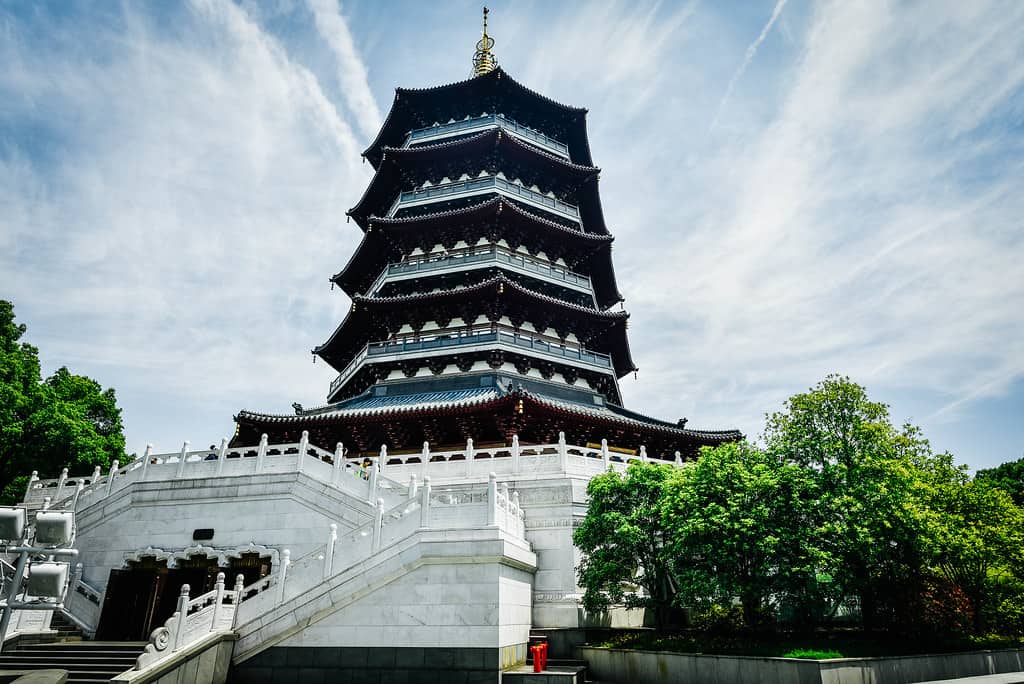
Want to see the best panoramic view of West Lake? Head to the Leifeng Pagoda.
Near West Lake, a spectacular five-story octagonal tower known as the Leifeng Pagoda may be discovered.
The Legend of the White Snake, based on Chinese folklore, has made the pagoda popular throughout the country.
At the story’s heart is a snake spirit living in the lake which finds love with a person who goes by the name Xu Xuan. At the end of the lore, the snake is imprisoned for eternity in Leifeng Pagoda by a Buddhist monk.
It was built in 975 AD of brick and wood with a brick base. During the Ming era, Japanese pirates destroyed the wooden structure of Leifeng Pagoda, believing it held weaponry.
In 1999, Hangzhou and Zhejiang Province agreed to construct Leifeng Pagoda. It opened in 2002, featuring four sightseeing lifts, air conditioning in the Pagoda, TV, and speakers.
A plaque engraved with the five Chinese characters meaning “Leifeng Pagoda Scenic Area” is displayed against the backdrop of the Leifeng Pagoda.
Visit now and discover not only a historical destination but also a place that offers you breathtaking views of attractions.
Address: 15 Nanshan Rd, Xihu, Hangzhou, Zhejiang, China, 310007
Lingyin Temple and Fei Lai Feng
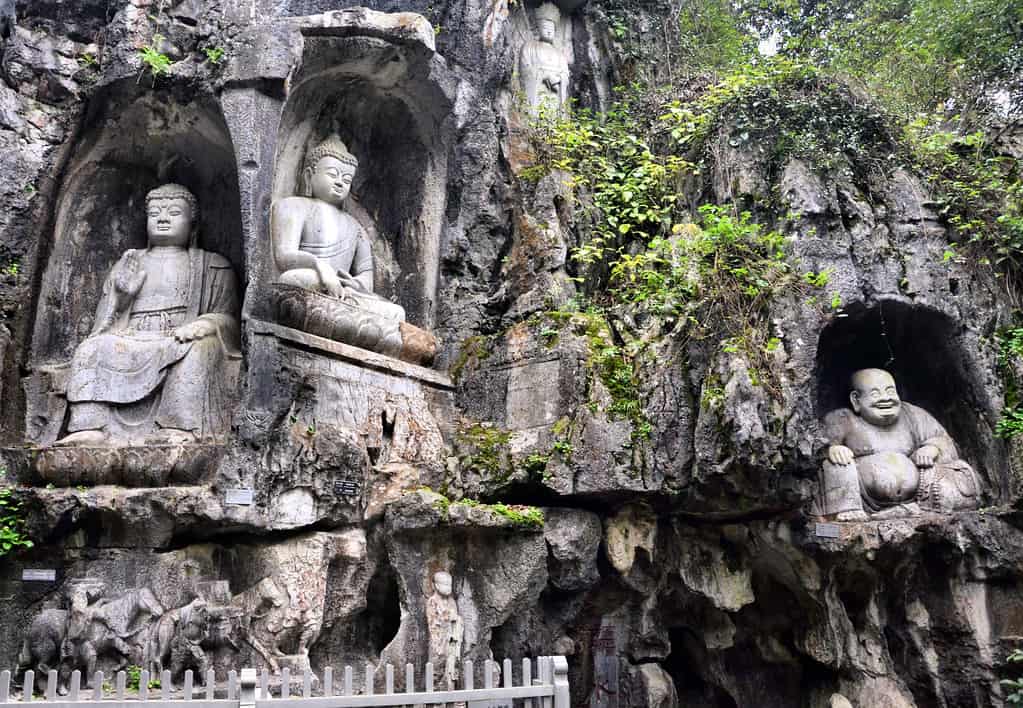
A journey that makes you forget you’re even in the middle of a bustling city!
China’s oldest and largest Buddhist temple, Lingyin Temple, also known as the Temple of the Soul’s Retreat, stands out from the numerous beautiful ancient monuments in Hangzhou.
Many residents and Chinese visitors will be lighting incense and saying prayers here.
The scent of incense will greet you as you walk through the door, evoking a sense of spirituality and peace that is difficult to find in the bustling metropolis.
Fei Lai Feng is another prominent feature in this area which translates to “The Peak That Flew from afar.”
There are various caves and recesses on this picturesque mountain, the latter of which contains 380 statues of Buddha going back to the 10th century.
The majority of the Buddha statues have remained in excellent condition, and their fine craftsmanship and graceful appearances are still widely admired today.
A trip to the temple will give you a once-in-a-lifetime experience, so plan your visit now!
Address: Zhejiang, Hangzhou, Xihu
The only thing that you can buy that will actually make you richer is travel. The places you visit leave an indelible mark on your identity. The journey of discovery begins now. Use this around the world travel travel guide to explore all the countries! America is one of the easiest countries in the world to get to. Click here for the best states in USA to visit.
Mount Mogan
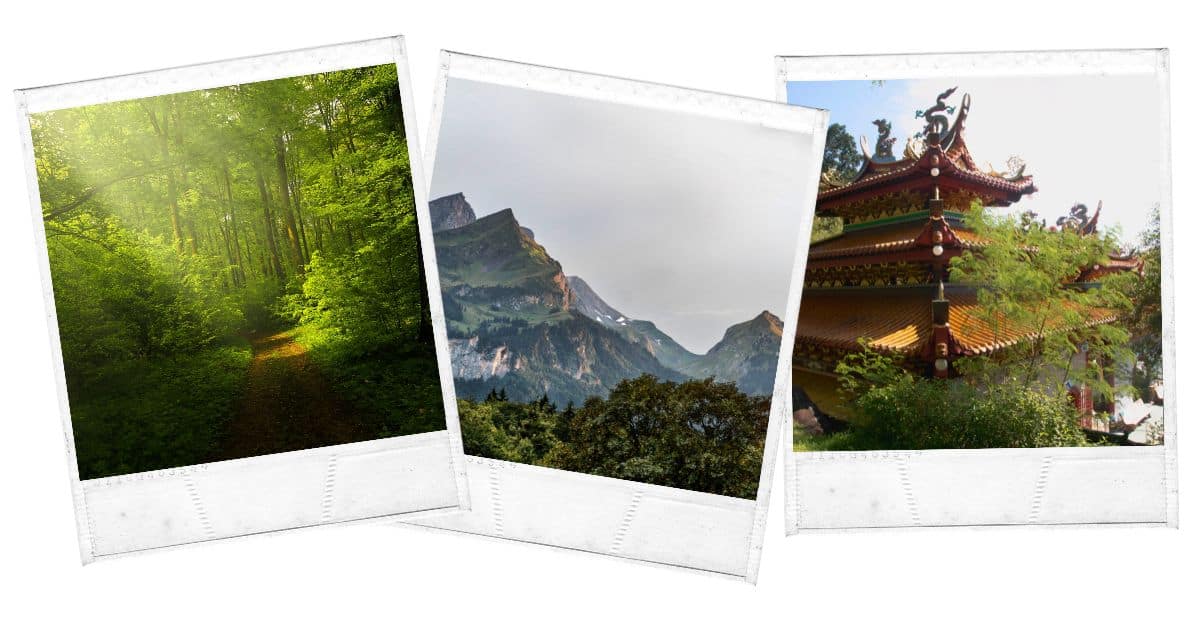
The perfect area to go hiking and unwind on the weekend
A trip to Mount Mogan is one of the best day trips from Hangzhou, and it’s also one of the most accessible, thanks to public transportation and tour buses.
In the 5th century BC, a famous couple resided here who were talented blacksmiths who worked tirelessly to create two magnificent swords for the emperor.
This 719-meter-tall mountain is located approximately 50 kilometers northwest of the city.
The mountain has long been a popular destination for the country’s social elite. Its natural beauty has made it a popular tourist destination (even Chiang Kai-shek had a place here).
Other popular activities include hiking and biking, with many stopovers at quaint local inns or smaller hotels in some of the older villas established in the early 20th century that have been converted into boutique hotels.
The little town of Moganshan is a suitable starting place, as it is home to a wide variety of both traditional and modern restaurants and housing establishments.
Find your peaceful space to admire the location’s natural beauty when you visit Mount Mogan.
Location: Deqing County, Zhejiang
Longjing Tea and the Dragon Well
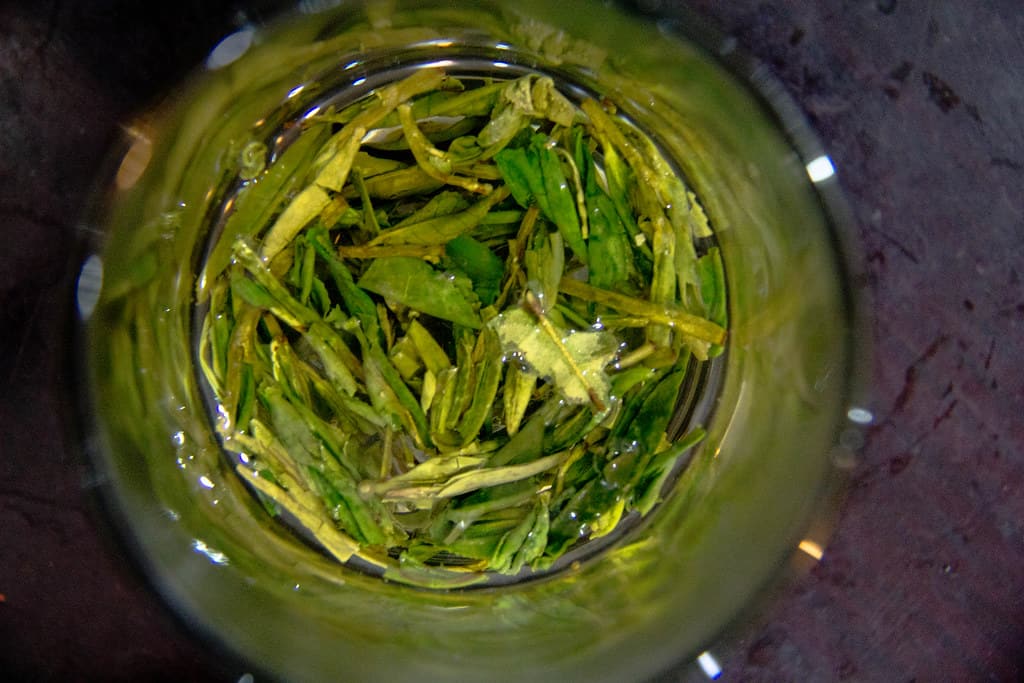
The epicenter of knowledge and appreciation for China’s favorite beverage
It is known worldwide for its locally cultivated Longjing tea, or the lóngjing chá, named after the little village where it is produced on the southwest of West Lake, which is approximately three kilometers away.
Longjing, which means “Dragon Well” in Chinese, is a beautiful village located in some of China’s most beautiful countryside and is only a short drive from Hangzhou.
One of the highlights of a trip to the small village and all its plantations is indeed the opportunity to try some of the region’s traditional teas right where they are grown.
The distinctive flavor of these teas is said to be due to the ancient spring that has been used for thousands of years to provide water for the Dragon Well, which is located in the center of the village.
A must-see is the outstanding China National Tea Museum, which features a wide range of exhibits on everything from how tea is made and how it is used in rituals to the history of its use.
Take advantage of the elevated viewing platform’s spectacular views, which are even more enjoyable, by including a tea tasting.
Address: 88 Longjing Rd, Xihu, Hangzhou, Zhejiang
Pagoda of Six Harmonies
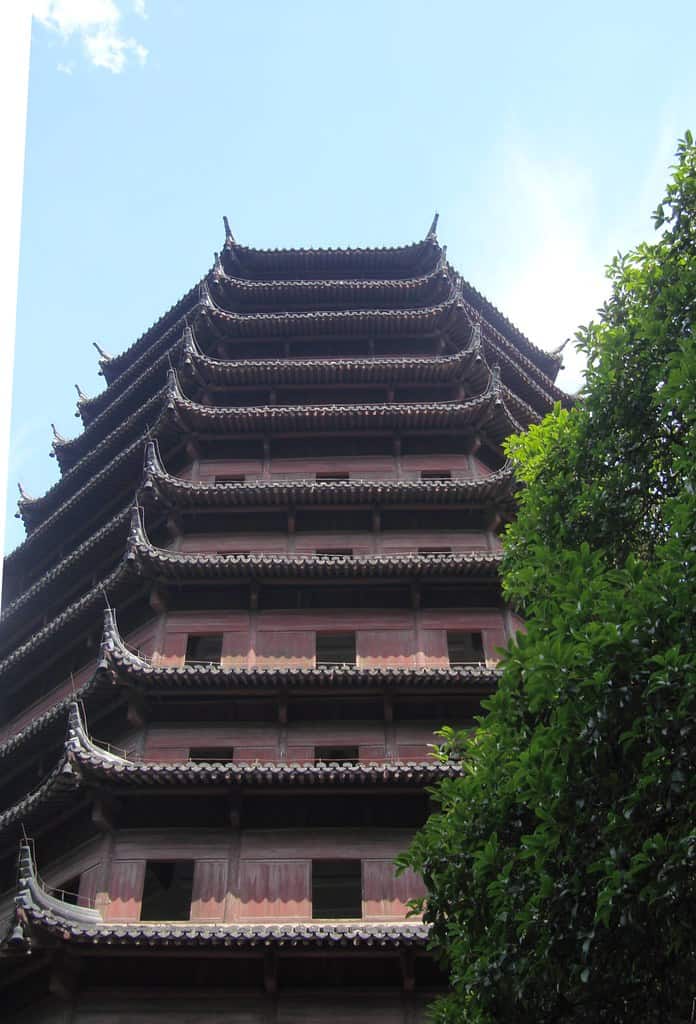
Once served as a lighthouse, now a pagoda.
Six Harmonies Pagoda, also known as Liuhe Pagoda, is found on Yuelun Hill in Hangzhou on the northern bank of the Qiantang River.
Six Buddhist ordinances are referenced in the pagoda’s name, including heaven, earth, north, east, west, and south.
During the Northern Song Dynasty in 970, the monarch of Wuyue intended to demonstrate his mortal authority by overcoming the wicked tidal bore of the Qiantang River.
The pagoda’s strategic placement next to the Qiantang River made it a lighthouse in the past.
It was designated a UNESCO World Heritage Site in 1961. The product you see today is the result of that designation.
Liuhe Pagoda, a calm and majestic reminder of China’s glorious history, offers visitors breathtaking vistas of the rushing Qiantang River.
From the outside, the Six Harmonies Pagoda appears to have 13 levels, although it only has 7, as the Qing Dynasty concluded.
The inside of an easy level has a square space with a spiral staircase connecting the ground and the top.
Visitors can also find a lovely natural walkway with sculptures, bells, shrines, and inscriptions behind the Six Harmonies Pagoda.
Address: 54WJ+R54, Xihu, Hangzhou, Zhejiang, China, 310002
Prince Bay Park
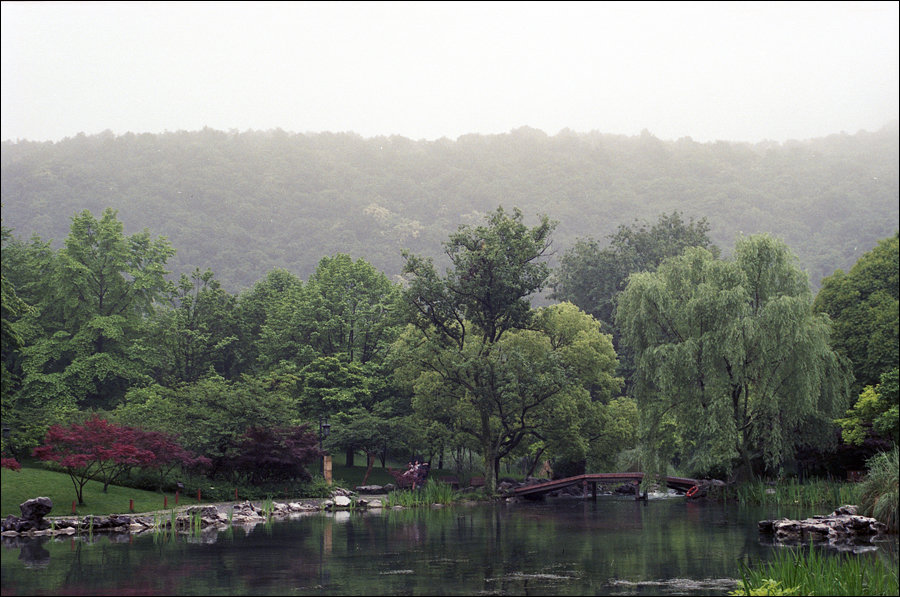
This is not just a traditional Chinese landscaped garden on your itinerary.
The Prince Bay Park is a 0.2-square-kilometer space located to the southwest of the West Lake picturesque region, up against Nanping Hill.
According to legend, two princes from the Southern Song Dynasty were buried here when this park was only a shallow bay. As a result, Prince Bay Park was renamed.
The park’s timeless and exquisite western design complements its natural splendor.
For the most part, the park’s flora is the main draw. An abundance of blossoms distinguishes this one.
In this way, nature’s beauty is highlighted while showcasing the aesthetic innovation of man-made structures.
In the spring, Prince Bay Park is charming, with its flowering flowers and apple and cherry trees. The site sees thousands of visitors each year.
A 20-day tulip show is held each year, known for its flower displays.
If you visit the park on a nice day, you’ll be able to catch a glimpse of couples posing for wedding photos and the world-famous Hangzhou West Lake.
Address: 5-1 Nanshan Rd, Xihu, Hangzhou, Zhejiang, China, 310002
Qiandao Lake
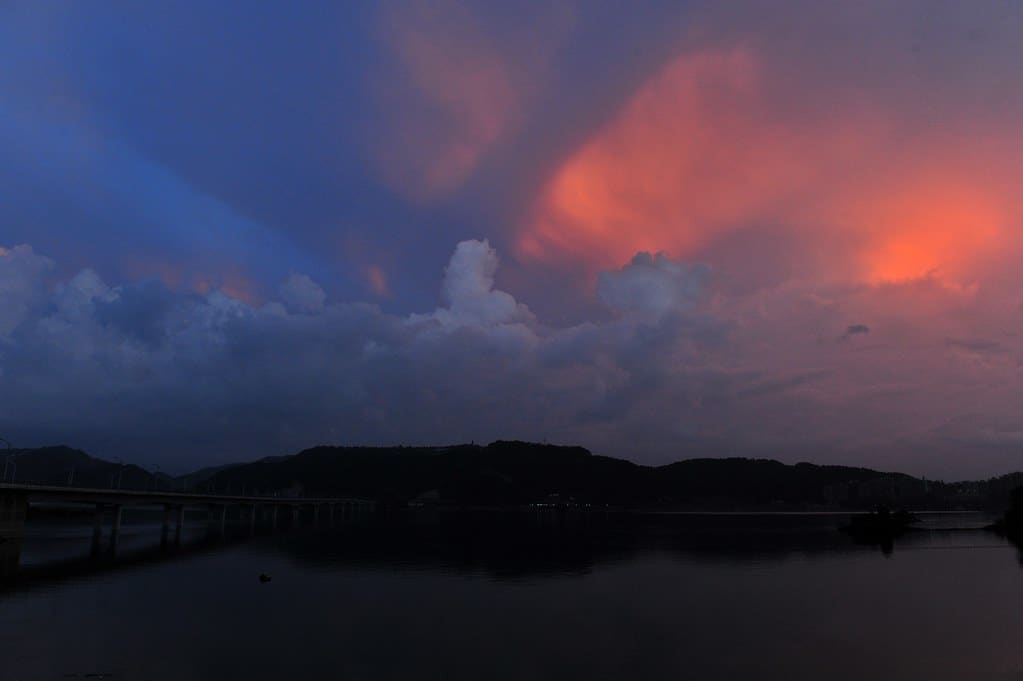
Enjoy the views of Qiandao Lake from the roadside.
The Thousand Island Lake China, also known as Qiandao Lake, is an artificial lake with 1078 islands of varying sizes and shapes scattered both sparsely and densely over the lake’s surface.
Even though most Western tourists have never heard of the Thousand Islands region, the location is well-known among those who visit the country on vacation.
The result is that hundreds of thousands of people travel here from the adjacent cities of Hangzhou and Shanghai for short weekends and long holidays and short breaks.
Hiking around the lake and enjoying water sports like swimming and boating are popular pastimes.
Qiandao Lake, recognized for its clear and occasionally drinkable water, is utilized to produce the famed Nongfu Spring brand of mineral water, sold worldwide.
It also has a fantastic reputation for adventurous activities such as diving, which is particularly popular in the area surrounding the historic Submerged city of Shi Cheng.
Have one of a kind experience when you visit Qiandao Lake!
Address: Shangxi Village, Pingmen, Qiandaohu
Qinghefang Ancient Street
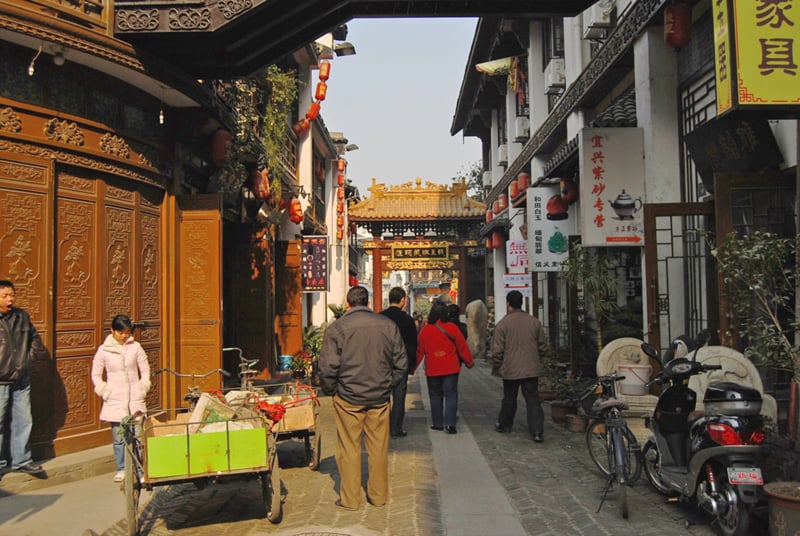
Have some time to check out the heart of Hangzhou’s historic quarter during your visit to the city.
It’s a great spot to get a sense of what life was like in Old Hangzhou because it’s the city’s most famous landmark.
This relatively untouched and bustling district, only a short walk from West Lake, gives visitors a glimpse into what urban life in traditional Chinese is like.
Numerous street painters demonstrate ancient writing and art styles in the region and countless traditional restaurants.
Apart from that, there are a large number of unique shops and stalls offering everything from tea to silk.
It’s a good idea to check out the many untouched side streets that go out of Qinghefang. In return, you’ll get a fascinating glimpse into the lives of Chinese artisans and craftsmen over the ages.
If you’re looking for souvenirs and a good time, this is the place to go!
Address: Hefang Street, Hangzhou
Songcheng
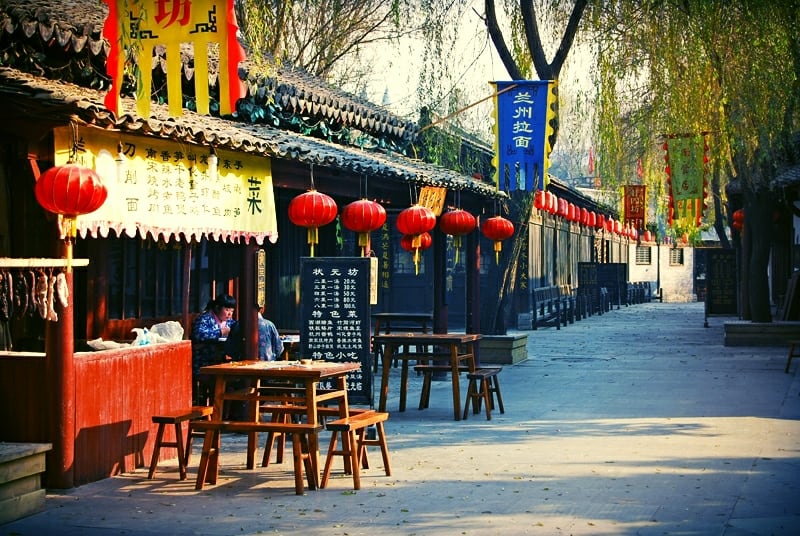
“Give me one day, and I’ll give you a thousand years.” as their tagline.
As the largest theme park in the city and the first in Zhejiang, Songcheng, usually known as Song Dynasty Town, pays tribute to China’s Song Dynasty (960-1279 AD) culture.
It is branded as a theme park, but it is more of a theme park, and it is the biggest of its sort in China, attracting six million visitors every year.
Songcheng is an entire town built to look like it belonged to the Song Dynasty: as you walk about, you’ll witness characters dressed in period costumes, traditional workshops, and elegant buildings.
There are numerous man-made scenic sites throughout the town, giving it a unique blend of realism and romance rooted in, but not just focused on, its rich historical past.
Don’t miss one of their performances, the Romantic Show of Songcheng, a one-hour show with song, dance, and acrobatics in the style of a West End production, is the primary event here.
Address: 148 Zhijiang Rd, Xihu, Hangzhou, Zhejiang, China, 310024
West Lake
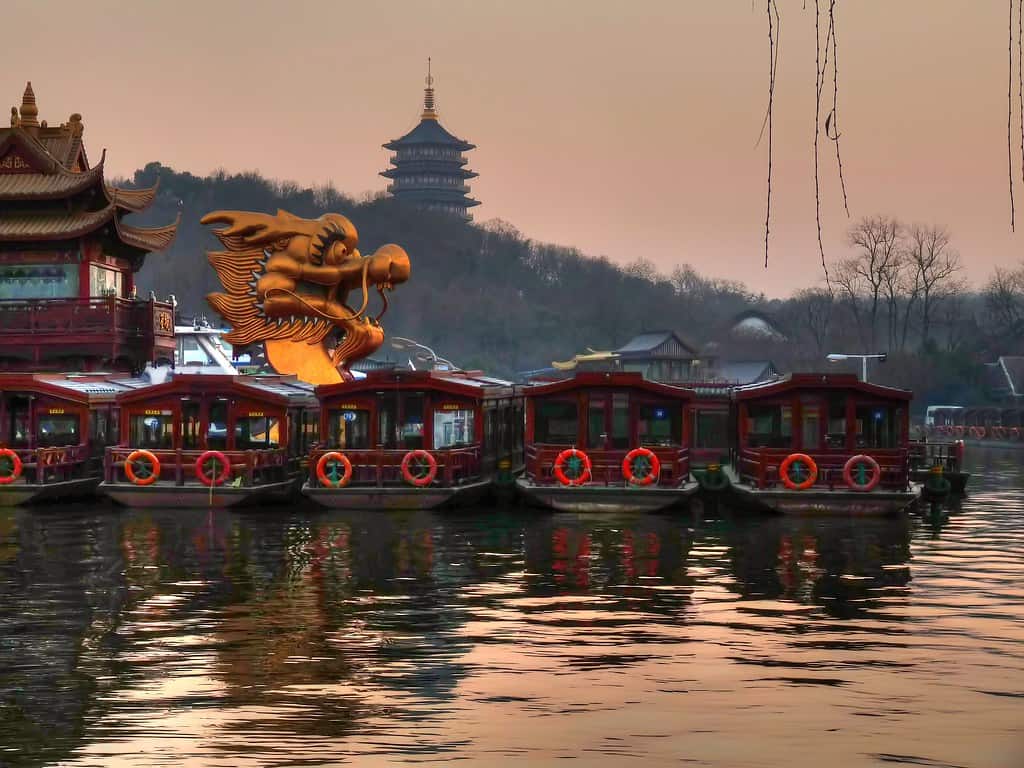
Every day, regardless of the weather or time of day, the West Lake puts on a show of beauty and never fails to make you wow!
Almost everything else in the city’s historic area revolves around it.
There are hills and old temples all around this six-square-kilometer site.
Along the lake, the Su and Baidi Causeways divide it into five segments.
North Inner Lake, Outer Lake, South Lake, Lake Yue, and West Inner Lake are all included in these parts.
Building the approximately three-kilometer-long Su Causeway, completed in 1089, has become one of West Lake’s most popular tourist attractions.
A particularly popular time to stroll is in spring when garden beds and peach trees are in blossom since it links the lake’s north and south shores.
The entire lake, designated as a UNESCO World Heritage Site in 2011, is a lovely area to spend time with family and friends.
Address: No. 1 Longjing Road, Xihu District, Hangzhou City, Zhejiang Province
Wuzhèn Water Village
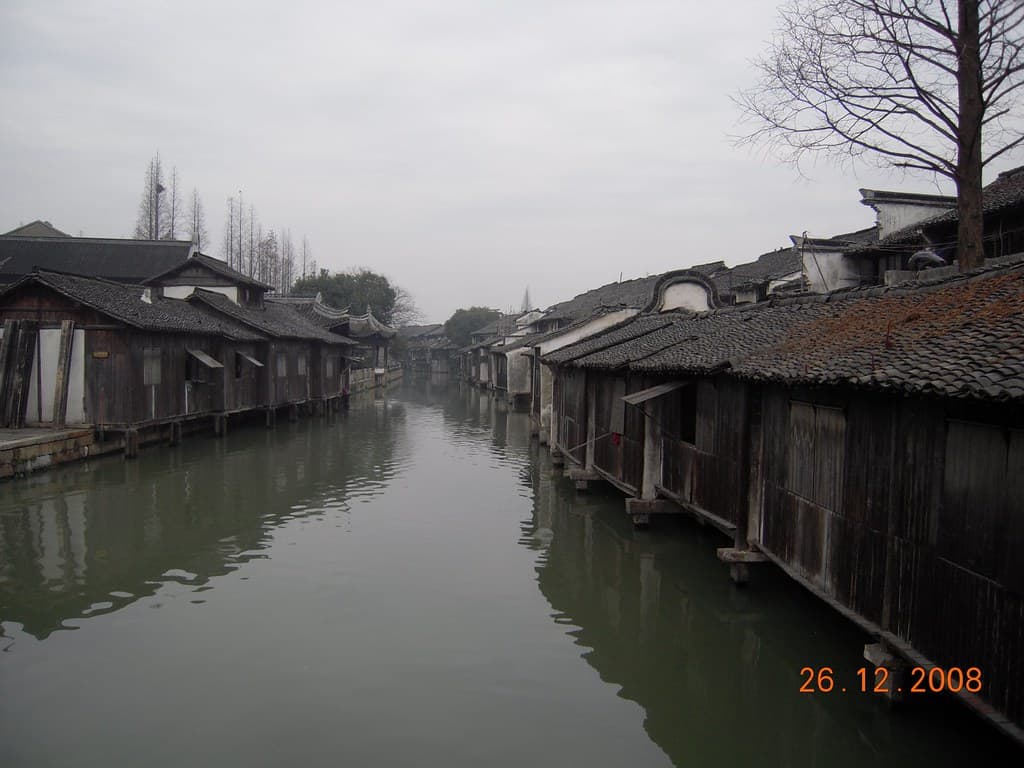
See a Venice-like water village in China!
Longboats driven by locals paddling around the water with enormous poles may be seen crisscrossing each of Wuzhèn’s rivers.
These longboats transport everything from visitors and cattle to fresh produce and other goods.
This renowned tourist site is divided into six distinct areas, each focusing on a different aspect of the region’s rich cultural heritage.
Among these are districts devoted to arts and entertainment, crafts and workshops, food and beverage, traditional homes, and a retail district!
In the town, the Tongji and Renji Bridges are the most famous crossings, with the former being particularly well-known because it is possible to see the latter through the arch of the former.
The many bridges, walkways, and sites of interest make it possible to spend hours roaming through the park or taking a boat trip if the visitors choose to.
Take your time exploring the town because numerous marked paths take you to whatever part of town most interests you at any given time.
Address: Tongxiang, Zhejiang
Yue Fei Temple
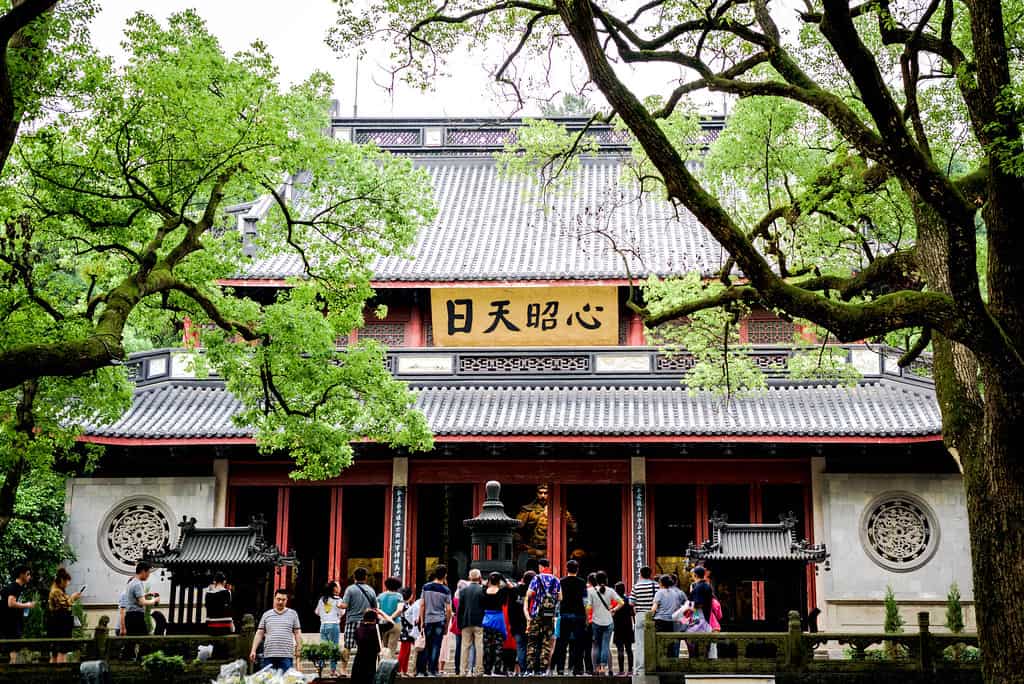
Visit the General’s Residence.
The Tomb of General Yue Fei, also known as Yue Fei Temple, is located at the southern foot of Qixia Hill, near West Lake.
It covered an area of 1.57 hectares and was created in memory of this great hero.
Even though he had successfully withstood multiple Tartar attacks, he was falsely convicted of high treason and, along with his son, was executed by hanging in 1142.
Later, he was found not guilty of the charges against him and was reburied on the grounds of the temple built in his honor.
Visitors should look out for a statue of Yue Fei in the Temple Hall, which has a highly adorned ceiling ornamented with cranes, which are considered a symbol of immortality.
The temple also contains 86 stone plaques on which Emperor Gaozong and his wife engraved ancient texts by Confucius. At the same time, the most precious relic is a celestial stone globe that dates back to the time of the Five Dynasties.
You should visit Yue Fei Temple to see beautiful architectural structures on West Lake.
Need more reasons to visit Hangzhou, China? Hop over to reasons to visit Hangzhou China at least once in your lifetime here
Address: Beishan Road, Xihu, Hangzhou

